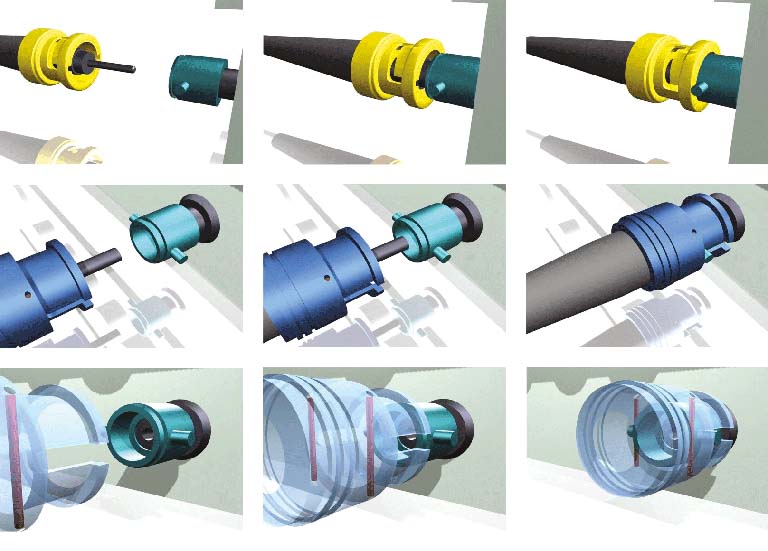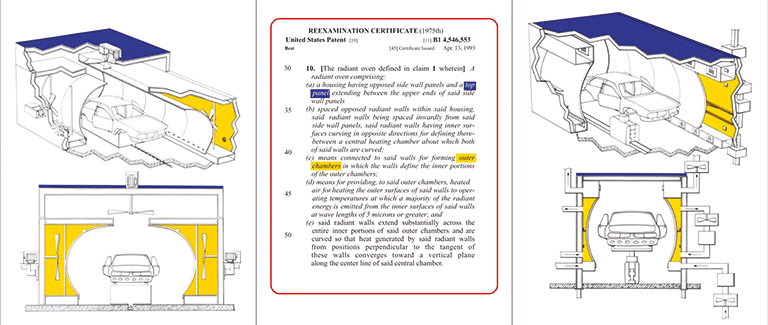
IP Litigation: What Place for Patent Drawings?
By Bernadette Marshall, NBG Drafting and Design, USA
In today’s ever more complex technology landscape, the number of patent lawsuits is on the rise and patent litigation costs are skyrocketing. This is especially true in the United States where, in 2012, according to a recent study by PricewaterhouseCoopers over 5,000 patent lawsuits – an all-time record – were filed, each costing on average around US$2.8 million. Within this setting, companies should not underestimate the importance of using simple, clear and precise illustrations, not only to enhance their chances of obtaining a patent in the first place, but more importantly to defend their rights in the event of litigation.
Patent drawings – graphical representations of a given technology and how it functions – are an integral and essential part of the process of applying for patent protection (with the exception of chemical compounds). An invention is often more easily explained by drawings than by lengthy written explanations. Accurate, clear drawings strengthen and enhance patent applications (see "Better Drawings Make a Better Patent") making it easier for patent examiners to understand a technology and its associated claims.
They can also prove invaluable in the event of a dispute. Whether a right owner is pursuing an infringer or defending a patent, drawings can help educate a mediator, an arbitrator, a judge or a jury and help clinch a favorable court decision. Whether deciding on appropriate damages or negotiating a settlement, a well-defined patent, supported by meticulously prepared drawings, enables the owner to obtain the best result possible.

Litigation is, of course, the worst case scenario. It is preferable to deter potential infringers before they even get started. A patent that is clear and unambiguous, with professionally prepared patent drawings may make an infringer think twice about copying an idea. The earlier an infringer is deterred the better it is for the patent owner.
However, if a case does go to trial a patent application containing accurate and clear patent drawings is critical insofar as it helps the judge and members of the jury to understand the patent owners’ claims. In many jurisdictions the jurors do not take trial exhibits into the jury room but will often have a copy of the patent document containing a complete set of drawings.
That said, it is not always recommended to simply enlarge a patent drawing because what may be clear to a patent examiner may not be clear to a mediator, arbitrator, judge or a jury. Detailed and precise patent drawings make it easier to generate graphics for the purposes of a trial or arbitration or mediation. If patent drawings are initially created using computer-aided design and drafting (CADD) software (most patent drafters use CADD), the files can, as a rule, be used to prepare graphics without having to recreate them from scratch, saving time and money.
Graphic skill
Many patent drafters are themselves skilled in creating graphics for alternative dispute resolution (ADR) or litigation purposes. The patent drafter who created the drawings for a specific patent application in the first place will already be familiar with the invention and will spend less time preparing any graphics required for litigation purposes, saving the patent owner additional expense.
Skilled patent drafters have many creative ways of producing visually pleasing and persuasive exhibits that are easy to understand. The more complex and less defined the case, the more valuable the drafter will be in making constructive proposals. The technique employed to present the information, be it in the form of high-tech 3-D animation or low-tech blow-up charts, depends, to a large extent, on the purpose for which that information is required. For instance, is the aim to present the patented invention clearly or is it to explain highly technical aspects of the patent in more detail?

In the event of an infringement lawsuit against your product, patent drawings featuring known patents, products or publications prior to the filing date of the other party’s patent could help support your case. The size, clarity, and position of the featured elements as well as the use of color to highlight key elements can be very persuasive. Consistency in the presentation of an item or product can strengthen recall.
Effective graphics can highlight subtle differences or similarities between the invention that is the subject of a lawsuit and the prior art. Many options are available when it comes to deciding how best to portray evidence in support of a case. Cost, however, can be a determining factor, so it is important to obtain a detailed proposal up front.
Options available include:
- Charts and graphs to simplify complex information and make it easier to understand;
- Timelines to display events in chronological order;
- 3-D animations to enable better understanding of how a technology works;
- Photorealistic animations to highlight product similarities and differences;
- PowerPoint presentations, enlargements, photographs, working models and interactive exhibits.
When it comes to design patents - a type of design right under US law - in the US, infringement is typically determined wholly on the basis of the drawings included in the application; proof of unfair competition is generally not required.
According to United States Patent and Trademark Office (USPTO) guidelines (USPTO: A Guide to Filing a Design Patent Application, § Drawings or Black & White Photographs) “the drawing disclosure is the most important element of the application” and the drawing or photograph in a design patent application “constitutes the entire visual disclosure of the claim”. Drawings therefore need to be so well executed that “nothing regarding the design sought to be patented is left to conjecture.”
The current test for design patent infringement, known as “the ordinary observer test” used in Gorham v. White (81 US 511 (1871)), determines that there is infringement if “in the eye of an ordinary observer giving such attention as a purchaser usually gives, two designs are substantially the same”. Design patent litigation is about assessing the design, form and visual aspects of a product. Graphics used in such litigation are an effective means of demonstrating whether two designs are substantially similar or different.
The services of a competent and experienced drafting firm can prove invaluable in securing and defending patent rights. Good patent drawings make for robust applications and sturdy defense when necessary.
The WIPO Magazine is intended to help broaden public understanding of intellectual property and of WIPO’s work, and is not an official document of WIPO. The designations employed and the presentation of material throughout this publication do not imply the expression of any opinion whatsoever on the part of WIPO concerning the legal status of any country, territory or area or of its authorities, or concerning the delimitation of its frontiers or boundaries. This publication is not intended to reflect the views of the Member States or the WIPO Secretariat. The mention of specific companies or products of manufacturers does not imply that they are endorsed or recommended by WIPO in preference to others of a similar nature that are not mentioned.